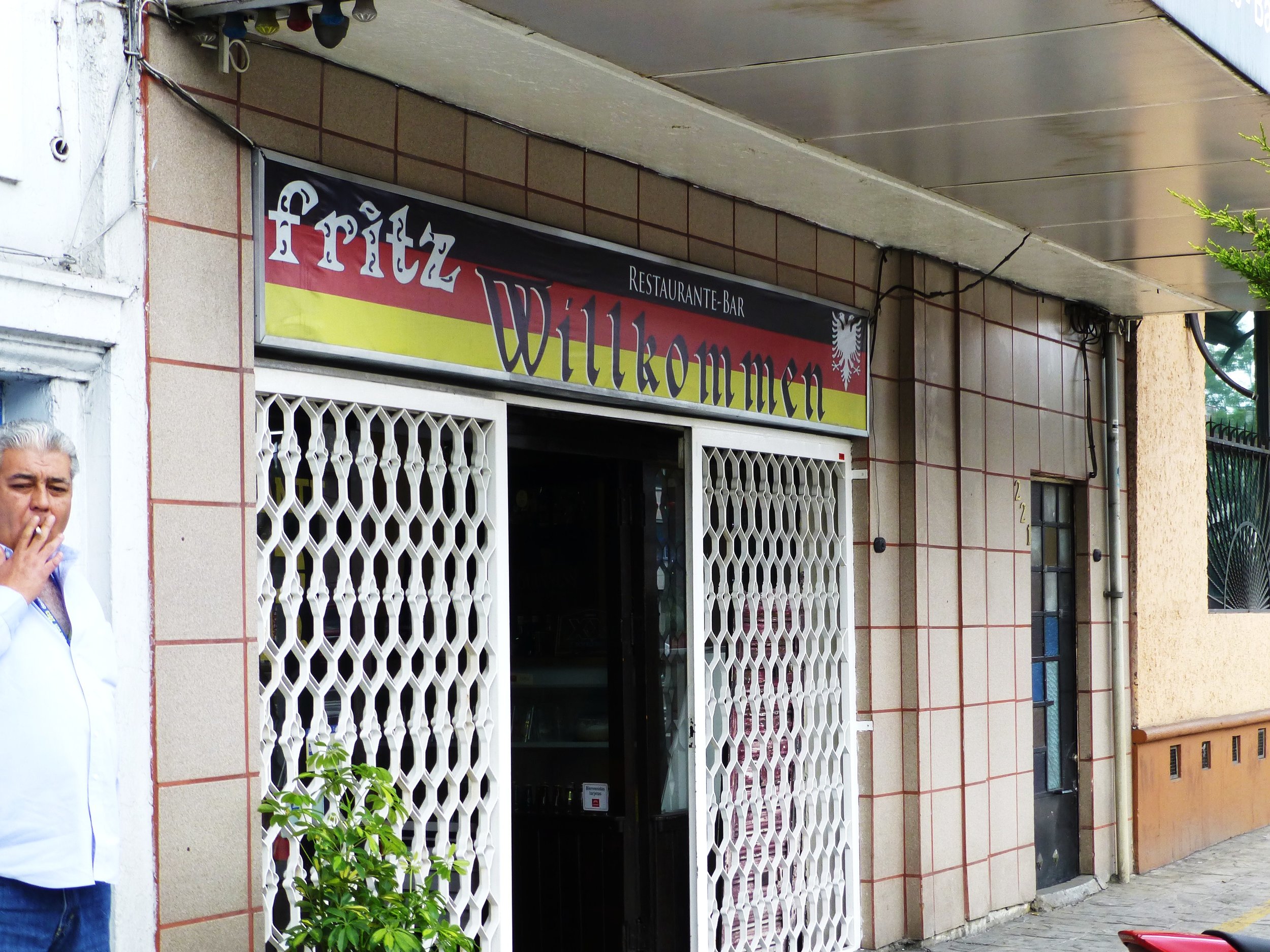 I've passed by this place for more than twenty years, since I first moved to Mexico City. Which isn't so strange, as it's been here since 1947. I am referring to Fritz, a German restaurant on Calle Dr. Rio de la Loza 221, almost at the corner of Dr. Lucio, Colonia Doctores. But I didn't eat there until recently.
I've passed by this place for more than twenty years, since I first moved to Mexico City. Which isn't so strange, as it's been here since 1947. I am referring to Fritz, a German restaurant on Calle Dr. Rio de la Loza 221, almost at the corner of Dr. Lucio, Colonia Doctores. But I didn't eat there until recently.
The place has always piqued my curiosity. The problem is that, in a temperate climate, one is not always in the mood for wiener schnitzel con spaetzle. But the day that you are, this is the place to go in Mexico City.

I went with two friends on a recent Saturday afternoon. Fritz has a rustic air, something like a country inn in Bavaria. (Well, at least in my imagination. I've never been to Bavaria.) The walls are decorated with photos of the Televisa soap-opera stars and newscasters who seem to have flocked to the place in the 1970s and 1980s. (It's around the corner from the Televisa studios on Avenida Chapultepec.)

They start you off with a bread basket and some ensalada rusa: a potato salad that is more Mexican than German (or Russian, as its name indicates). The list of beers, principally from Germany and Belgium, is impressive and enticing. Fritz also offers Mexican beer.

The three of us split a Plato Especial Fritz, which included bratwurst, frankfurters, turkey wurst, wiener schnitzel and a breaded hamburger. It was served with fried potatoes, sauerkraut and a cucumber salad. Plus three different kinds of mustard. This dish -- although advertised as for two people on the menu -- was plenty for the three of us. You'd only want more if you had a Wagnerian appetite.

I left Fritz a happy man. (Although I feel obliged to say that my friends, who split an apple strudel dessert, were not terribly impressed with it. Like me, I guess they should have stopped while we were ahead.)
According to the restaurant web site, Herr Fritz, the original owner, came to Mexico "around 1940," which perhaps would have made him someone who was trying to escape the Nazis, rather than a Nazi trying to escape. In any case, he died around 1970, and the place has been under the management of one Robert Hassey for the last 30 years.





















